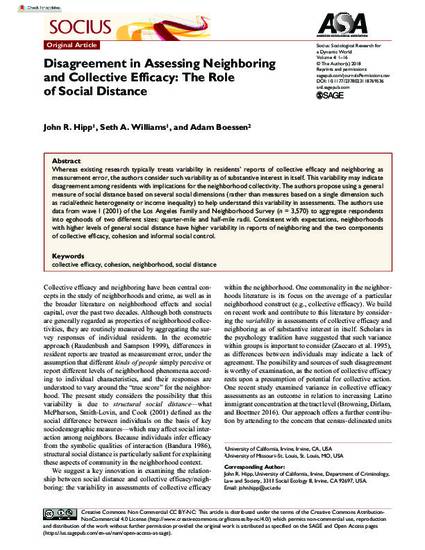
Article
Disagreement in Assessing Neighboring and Collective Efficacy: The Role of Social Distance
Socius: Sociological Research for a Dynamic World
(2018)
Abstract
Whereas existing research typically treats variability in residents’ reports of collective efficacy and neighboring as measurement error, the authors consider such variability as of substantive interest in itself. This variability may indicate disagreement among residents with implications for the neighborhood collectivity. The authors propose using a general measure of social distance based on several social dimensions (rather than measures based on a single dimension such as racial/ethnic heterogeneity or income inequality) to help understand this variability in assessments. The authors use data from wave I (2001) of the Los Angeles Family and Neighborhood Survey (n = 3,570) to aggregate respondents into egohoods of two different sizes: quarter-mile and half-mile radii. Consistent with expectations, neighborhoods with higher levels of general social distance have higher variability in reports of neighboring and the two components of collective efficacy, cohesion and informal social control.
Disciplines
Publication Date
January 1, 2018
DOI
10.1177/2378023118769536
Citation Information
Adam Boessen, John R. Hipp and Seth A. Williams. "Disagreement in Assessing Neighboring and Collective Efficacy: The Role of Social Distance" Socius: Sociological Research for a Dynamic World Vol. 4 (2018) Available at: http://works.bepress.com/adam-boessen/25/
Creative Commons license

This work is licensed under a Creative Commons CC_BY-NC International License.
